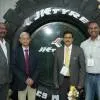India's transport infrastructure is poised for a significant transformation with the development of centralized terminal hubs, designed to streamline and integrate various modes of transportation. The Indian government has announced pilot projects for these hubs in key locations, including Katra, Tirupati, Varanasi, and Nagpur, aiming to enhance the efficiency and connectivity of the nation's transport network.
Key Highlights:
Centralized Terminal Hubs Concept: The centralized terminal hubs are envisioned as multi-modal transport centers where various forms of transportation' such as rail, road, and air'converge, providing seamless connectivity for passengers. These hubs will facilitate easy transfer between different modes of transport, reducing travel time and improving the overall passenger experience.
Pilot Projects: The government has identified four cities "Katra, Tirupati, Varanasi, and Nagpur" for the initial pilot projects. These cities were chosen based on their strategic importance as religious, cultural, and logistical hubs. The success of these pilots could lead to the broader implementation of centralized terminal hubs across the country.
Katra: Known for being the base camp for pilgrims visiting the Vaishno Devi shrine, Katra's inclusion in the pilot project will help manage the large influx of pilgrims and tourists. The centralized terminal hub in Katra will integrate the railway station, bus terminals, and proposed air connectivity, ensuring smooth transit for millions of visitors annually.
Tirupati: As a major pilgrimage site in southern India, Tirupati attracts millions of devotees each year. The proposed hub will link the city's airport, railway station, and bus terminals, providing a unified transportation network that caters to the high volume of religious tourism.
Varanasi: Varanasi, one of the oldest and most spiritual cities in India, will benefit from a hub that connects its airport, railways, and roadways. This initiative is expected to ease the movement of pilgrims, tourists, and residents, further promoting the city as a key cultural destination.
Nagpur: Known as the geographical center of India, Nagpur is a major logistical and commercial hub. The centralized terminal in Nagpur will boost connectivity for freight and passenger transport, supporting the city's role as a critical junction in India's transport network.
Government Vision: The development of these hubs aligns with the government?s broader vision of creating an integrated, efficient, and sustainable transport infrastructure. By linking different modes of transport, these hubs are expected to reduce congestion, cut travel times, and lower emissions.
Infrastructure Development: The project will involve significant infrastructure development, including the construction of new terminals, the expansion of existing facilities, and the creation of seamless transfer points between different transport modes. The hubs will also feature modern amenities to enhance the passenger experience.
Economic Impact: The centralized terminal hubs are expected to have a positive economic impact by improving connectivity, boosting tourism, and creating job opportunities. The integration of transport networks will also facilitate trade and commerce, contributing to regional development.
Future Expansion: If successful, the pilot projects could pave the way for similar hubs in other parts of India, transforming the country's transport landscape. The initiative is part of a larger push by the government to modernize India?s infrastructure and support its growing economy.
Challenges and Considerations: The implementation of these hubs will require careful planning, coordination between various government agencies, and significant investment. Addressing challenges such as land acquisition, environmental concerns, and funding will be crucial to the success of the project.
Long-Term Vision: The centralized terminal hubs are part of India's long-term vision to build a world-class transport network that meets the needs of its growing population and economy. The project is expected to play a key role in achieving the country's infrastructure goals and improving the quality of life for its citizens.





















